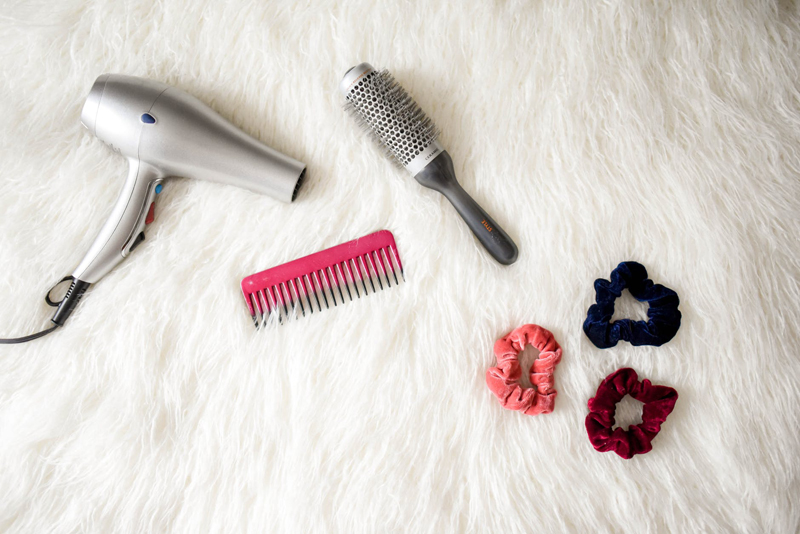Making Your Own Shampoo

Making your own shampoo can be fun – knowing that it can be done and learning how. Some say that it is economical, although commercial shampoo can often be fairly inexpensive. Making your own shampoo can be safer than using commercial shampoo. Those who are sensitive to certain chemicals know exactly what is in a product that they produce themselves as opposed to what may be included in commercial shampoo,.
Soapwort
The most inexpensive homemade shampoo is made with Soapwort – if it happens to grow near you. Soapwort is a plant that has sudsing properties. It is a perennial European herb that has become naturalized in the United States and often grows wild along roadsides, in meadows and near old home sites. It is known by several other names. You may have heard it called Soap Root, Bouncing Bet, Sweet Betty, Crow Soap, Fuller’s Herb, Bruisewort, or Latherwort. Its scientific name is saponaria officinalis.
The whole plant or just the root may be used in making shampoo.
Warning: Soapwort should not be taken internally. The high saponin content makes it mildly poisonous and it can destroy red blood cells when taken in large quantities.
Castile Soap
A more common method of making shampoo is to start with castile soap flakes.
You can purchase castile soap flakes or grate a bar of the soap into fine flakes.
Variations:
Essential Oils
To ‘dress up’ your preparation, mix 4 to 8 drops of essential oil. Divide your shampoo into two bottles and place different scents in each.
Peppermint or citrus are invigorating for a morning shampoo.
Lavender for a calming evening shampoo.
Herbal Shampoo
Prepare herbed water for use in making your shampoo. Steep one half ounce of your favorite herbs in a quart of hot water. Remove the herbs and reheat the water for use with the Soapwort or Castile flakes.
Conditioning Shampoo
For very dry hair add one quarter cup of olive oil or almond oil to one cup of your shampoo. Remember, if you are using the Castile soap recipe, it is already made of olive oil, so you may want to test it by using a smaller amount of extra oil at first.
Final note:
Your homemade shampoo will not lather like commercial shampoo. The commercial varieties have ingredients that cause the suds. Your preperation will also be of a thinner consistancy since it doesn't have thickening agents.
Soapwort
The most inexpensive homemade shampoo is made with Soapwort – if it happens to grow near you. Soapwort is a plant that has sudsing properties. It is a perennial European herb that has become naturalized in the United States and often grows wild along roadsides, in meadows and near old home sites. It is known by several other names. You may have heard it called Soap Root, Bouncing Bet, Sweet Betty, Crow Soap, Fuller’s Herb, Bruisewort, or Latherwort. Its scientific name is saponaria officinalis.
The whole plant or just the root may be used in making shampoo.
- Boil about a quart of water, tear up the plant or just the root and steep it in the hot water for 20 minutes
- Place the plant or root pieces in water and boil it for 15 minutes.
Warning: Soapwort should not be taken internally. The high saponin content makes it mildly poisonous and it can destroy red blood cells when taken in large quantities.
Castile Soap
A more common method of making shampoo is to start with castile soap flakes.
Castile soap is made exclusively from vegetable oil as opposed to animal fat. The soap is originally from Castile, Spain where olive trees are plentiful and in its purest form, it is made strictly from olive oil. Some other ingredients that are often found in Castile soap are coconut, canola, or soybean oil.
You can purchase castile soap flakes or grate a bar of the soap into fine flakes.
- Boil on quart of water.
- Pour the hot water over 4 ounces of castile soap flakes and stir until the flakes are dissolved.
- Cool the liquid and store it in a suitable container.
Variations:
Essential Oils
To ‘dress up’ your preparation, mix 4 to 8 drops of essential oil. Divide your shampoo into two bottles and place different scents in each.
Peppermint or citrus are invigorating for a morning shampoo.
Lavender for a calming evening shampoo.
Herbal Shampoo
Prepare herbed water for use in making your shampoo. Steep one half ounce of your favorite herbs in a quart of hot water. Remove the herbs and reheat the water for use with the Soapwort or Castile flakes.
Conditioning Shampoo
For very dry hair add one quarter cup of olive oil or almond oil to one cup of your shampoo. Remember, if you are using the Castile soap recipe, it is already made of olive oil, so you may want to test it by using a smaller amount of extra oil at first.
Final note:
Your homemade shampoo will not lather like commercial shampoo. The commercial varieties have ingredients that cause the suds. Your preperation will also be of a thinner consistancy since it doesn't have thickening agents.
This site needs an editor - click to learn more!
You Should Also Read:
Homemade Hair Conditioner
Do You Know How to Shampoo Your Hair ?
Related Articles
Editor's Picks Articles
Top Ten Articles
Previous Features
Site Map
Content copyright © 2023 by Lynne Chapman. All rights reserved.
This content was written by Lynne Chapman. If you wish to use this content in any manner, you need written permission. Contact
BellaOnline Administration
for details.


